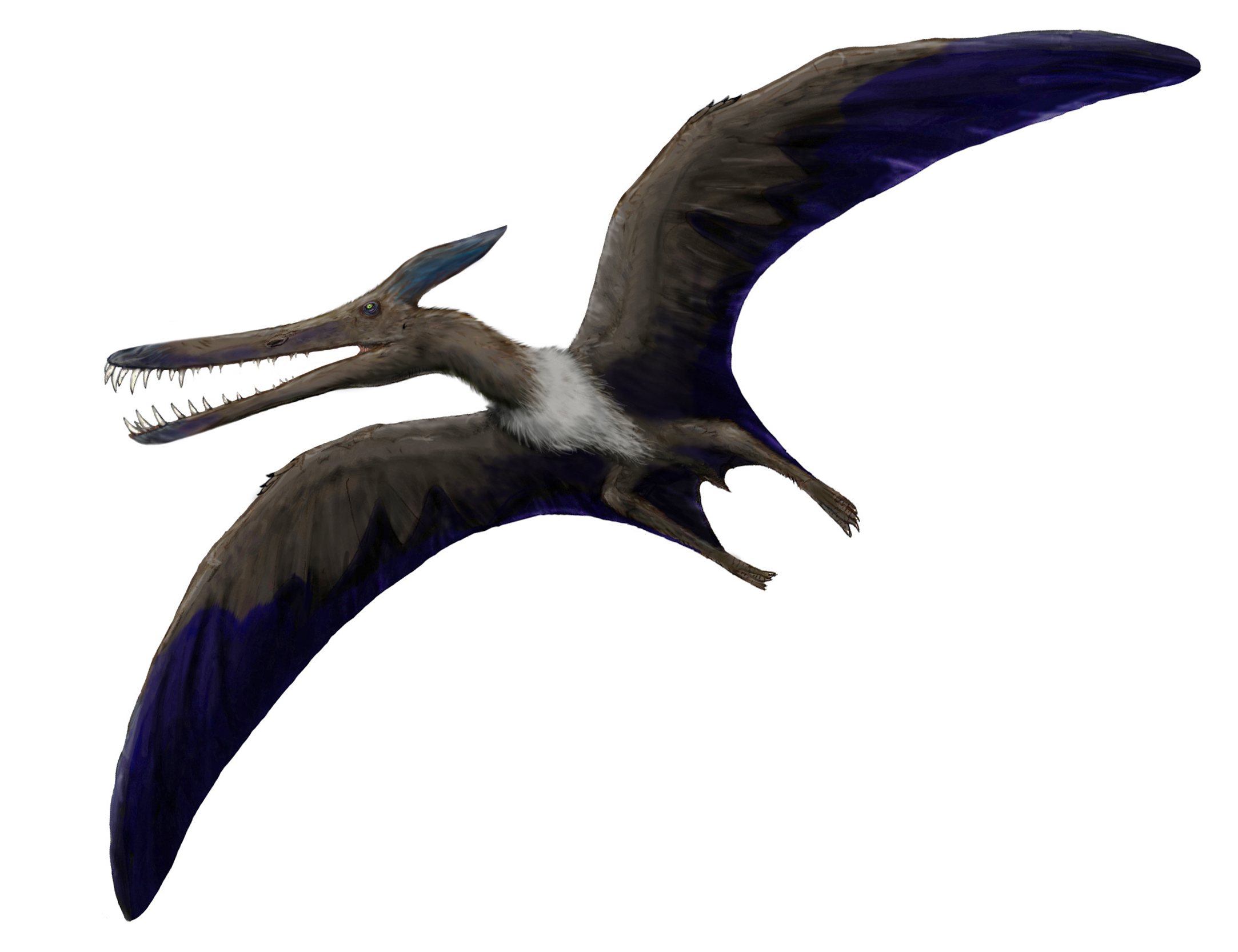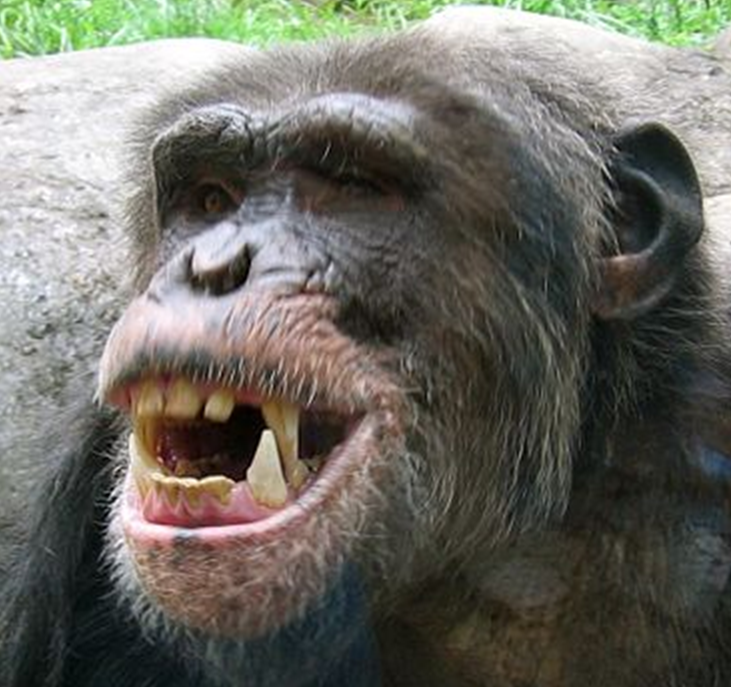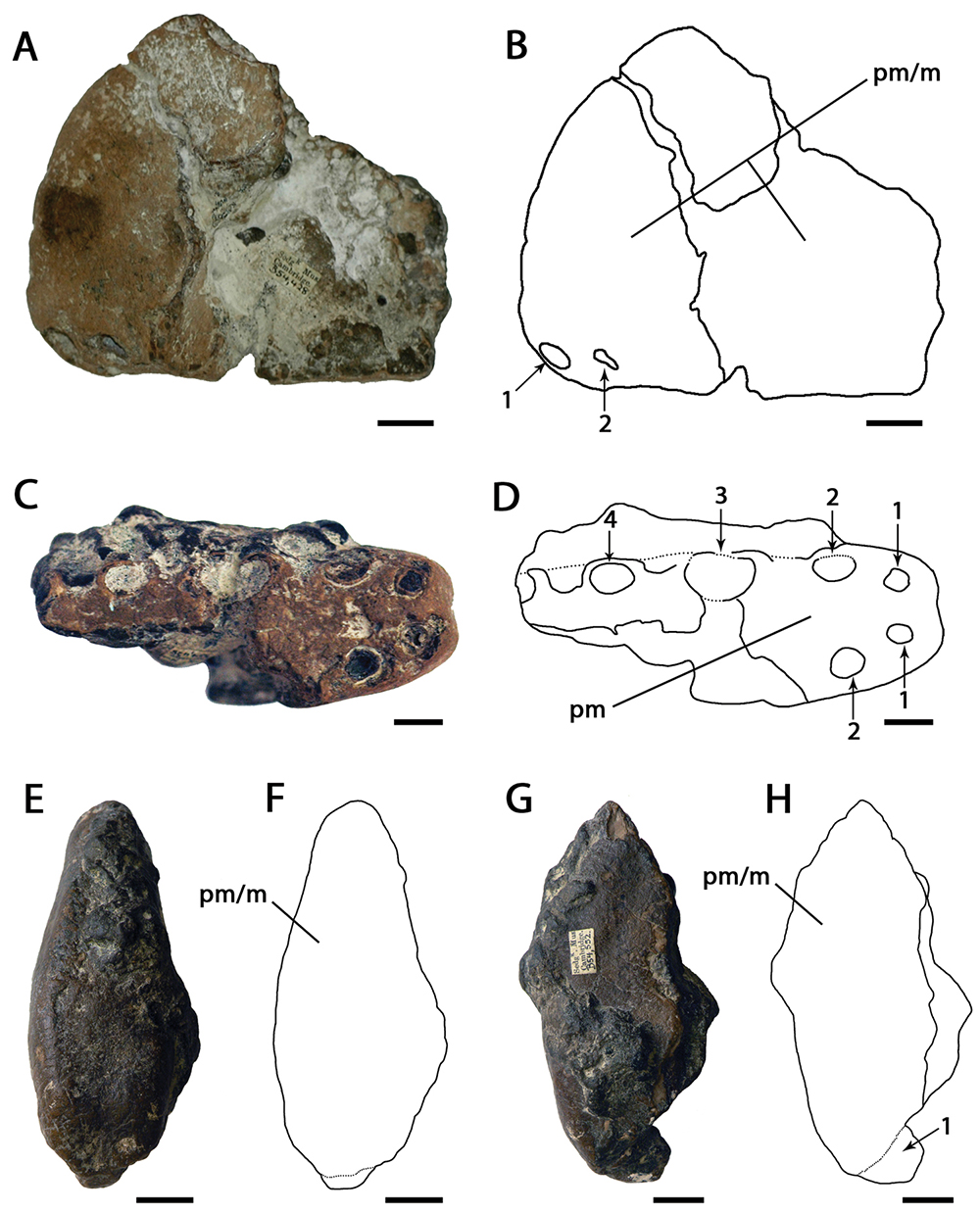|
Ludodactylus Sibbicki
''Ludodactylus'' (meaning "play finger") is a genus of anhanguerid pterodactyloid pterosaur from the Early Cretaceous period ( Aptian stage) of what is now the Crato Formation of the Araripe Basin in Ceará, Brazil. The type and only species is ''L. sibbicki''. The generic name ''Ludodactylus'' refers to the fact that the animal had the combination of teeth and a '' Pteranodon''-like head crest, similar to many toy pterosaurs, and no such creature was known to exist until the discovery of ''Ludodactylus''. However, ''Ludodactylus'' is not the only pterosaur known to possess these features, its very close relative ''Caulkicephalus'' is another example. Etymology The genus was named by Eberhard Frey ''et al.'' in 2003 and contains one known species, ''Ludodactylus sibbicki''. The name is derived from Latin ''ludus'', "play" and Greek ''daktylos'', "finger". ''Ludus'' refers to the fact, long lamented by paleontologists, that many toy pterosaurs combined teeth with a '' Pteranodo ... [...More Info...] [...Related Items...] OR: [Wikipedia] [Google] [Baidu] |
Aptian
The Aptian is an age in the geologic timescale or a stage in the stratigraphic column. It is a subdivision of the Early or Lower Cretaceous Epoch or Series and encompasses the time from 121.4 ± 1.0 Ma to 113.0 ± 1.0 Ma (million years ago), approximately. The Aptian succeeds the Barremian and precedes the Albian, all part of the Lower/Early Cretaceous. The Aptian partly overlaps the upper part of the Western European Urgonian Stage. The Selli Event, also known as OAE1a, was one of two oceanic anoxic events in the Cretaceous Period, which occurred around 120 Ma and lasted approximately 1 to 1.3 million years. The Aptian extinction was a minor extinction event hypothesized to have occurred around 116 to 117 Ma.Archangelsky, Sergio.The Ticó Flora (Patagonia) and the Aptian Extinction Event" ''Acta Paleobotanica'' 41(2), 2001, pp. 115-22. Stratigraphic definitions The Aptian was named after the small city of Apt in the Provence region of France, which is also known for ... [...More Info...] [...Related Items...] OR: [Wikipedia] [Google] [Baidu] |
Teeth
A tooth ( : teeth) is a hard, calcified structure found in the jaws (or mouths) of many vertebrates and used to break down food. Some animals, particularly carnivores and omnivores, also use teeth to help with capturing or wounding prey, tearing food, for defensive purposes, to intimidate other animals often including their own, or to carry prey or their young. The roots of teeth are covered by gums. Teeth are not made of bone, but rather of multiple tissues of varying density and hardness that originate from the embryonic germ layer, the ectoderm. The general structure of teeth is similar across the vertebrates, although there is considerable variation in their form and position. The teeth of mammals have deep roots, and this pattern is also found in some fish, and in crocodilians. In most teleost fish, however, the teeth are attached to the outer surface of the bone, while in lizards they are attached to the inner surface of the jaw by one side. In cartilaginous fish, ... [...More Info...] [...Related Items...] OR: [Wikipedia] [Google] [Baidu] |
Ornithocheiridae
Ornithocheiridae (or ornithocheirids, meaning "bird hands") is a group of pterosaurs within the suborder Pterodactyloidea. These pterosaurs were among the last to possess teeth. Members that belong to this group lived from the Early to Late Cretaceous periods (Valanginian to Turonian stages), around 140 to 90 million years ago. Ornithocheirids are generally infamous for having an enormously controversial and very confusing taxonomy. Although agreements that these animals were related, and therefore similar to istiodactylids and pteranodontians, there is still no virtual consensus over the exact content and interrelationships of this group. Ornithocheirids were the most successful pterosaurs during their reign, they were also the largest pterosaurs before the appearance of the azhdarchids such as ''Quetzalcoatlus''. Ornithocheirids were excellent fish hunters, they used various flight techniques to catch their prey, and they are also capable of flying great distances without f ... [...More Info...] [...Related Items...] OR: [Wikipedia] [Google] [Baidu] |
Starvation
Starvation is a severe deficiency in caloric energy intake, below the level needed to maintain an organism's life. It is the most extreme form of malnutrition. In humans, prolonged starvation can cause permanent organ damage and eventually, death. The term ''inanition'' refers to the symptoms and effects of starvation. Starvation may also be used as a means of torture or execution. According to the World Health Organization (WHO), hunger is the single gravest threat to the world's public health.Malnutrition The Starvelings The WHO also states that is by far the biggest contributor to [...More Info...] [...Related Items...] OR: [Wikipedia] [Google] [Baidu] |
Beak
The beak, bill, or rostrum is an external anatomical structure found mostly in birds, but also in turtles, non-avian dinosaurs and a few mammals. A beak is used for eating, preening, manipulating objects, killing prey, fighting, probing for food, courtship, and feeding young. The terms ''beak'' and '' rostrum'' are also used to refer to a similar mouth part in some ornithischians, pterosaurs, cetaceans, dicynodonts, anuran tadpoles, monotremes (i.e. echidnas and platypuses, which have a beak-like structure), sirens, pufferfish, billfishes and cephalopods. Although beaks vary significantly in size, shape, color and texture, they share a similar underlying structure. Two bony projections – the upper and lower mandibles – are covered with a thin keratinized layer of epidermis known as the rhamphotheca. In most species, two holes called ''nares'' lead to the respiratory system. Etymology Although the word "beak" was, in the past, generally restricted to the sharpened ... [...More Info...] [...Related Items...] OR: [Wikipedia] [Google] [Baidu] |
Ramus Of The Mandible
In anatomy, the mandible, lower jaw or jawbone is the largest, strongest and lowest bone in the human facial skeleton. It forms the lower jaw and holds the lower teeth in place. The mandible sits beneath the maxilla. It is the only movable bone of the skull (discounting the ossicles of the middle ear). It is connected to the temporal bones by the temporomandibular joints. The bone is formed in the fetus from a fusion of the left and right mandibular prominences, and the point where these sides join, the mandibular symphysis, is still visible as a faint ridge in the midline. Like other symphyses in the body, this is a midline articulation where the bones are joined by fibrocartilage, but this articulation fuses together in early childhood.Illustrated Anatomy of the Head and Neck, Fehrenbach and Herring, Elsevier, 2012, p. 59 The word "mandible" derives from the Latin word ''mandibula'', "jawbone" (literally "one used for chewing"), from '' mandere'' "to chew" and ''-bula'' ... [...More Info...] [...Related Items...] OR: [Wikipedia] [Google] [Baidu] |
Premaxilla
The premaxilla (or praemaxilla) is one of a pair of small cranial bones at the very tip of the upper jaw of many animals, usually, but not always, bearing teeth. In humans, they are fused with the maxilla. The "premaxilla" of therian mammal has been usually termed as the incisive bone. Other terms used for this structure include premaxillary bone or ''os premaxillare'', intermaxillary bone or ''os intermaxillare'', and Goethe's bone. Human anatomy In human anatomy, the premaxilla is referred to as the incisive bone (') and is the part of the maxilla which bears the incisor teeth, and encompasses the anterior nasal spine and alar region. In the nasal cavity, the premaxillary element projects higher than the maxillary element behind. The palatal portion of the premaxilla is a bony plate with a generally transverse orientation. The incisive foramen is bound anteriorly and laterally by the premaxilla and posteriorly by the palatine process of the maxilla. It is formed from ... [...More Info...] [...Related Items...] OR: [Wikipedia] [Google] [Baidu] |
Ornithocheirid
Ornithocheiridae (or ornithocheirids, meaning "bird hands") is a group of pterosaurs within the suborder Pterodactyloidea. These pterosaurs were among the last to possess teeth. Members that belong to this group lived from the Early to Late Cretaceous periods ( Valanginian to Turonian stages), around 140 to 90 million years ago. Ornithocheirids are generally infamous for having an enormously controversial and very confusing taxonomy. Although agreements that these animals were related, and therefore similar to istiodactylids and pteranodontians, there is still no virtual consensus over the exact content and interrelationships of this group. Ornithocheirids were the most successful pterosaurs during their reign, they were also the largest pterosaurs before the appearance of the azhdarchids such as ''Quetzalcoatlus''. Ornithocheirids were excellent fish hunters, they used various flight techniques to catch their prey, and they are also capable of flying great distances wit ... [...More Info...] [...Related Items...] OR: [Wikipedia] [Google] [Baidu] |
Staatliches Museum Für Naturkunde Karlsruhe
The State Museum of Natural History Karlsruhe (german: link=no, Staatliches Museum für Naturkunde Karlsruhe), abbreviated SMNK, is one of the two state of Baden-Württemberg's natural history museums. Together with the State Museum of Natural History Stuttgart (Staatliches Museum für Naturkunde Stuttgart) it is one of the most important repositories for state-owned natural history collections. It is well known for its exhibitions on all aspects of natural history in the city of Karlsruhe and beyond. Every year, the SMNK is visited by about 150,000 people. Research at the museum mainly deals with various fields of natural history i.e. geology, paleontology, taxonomy, biogeography, and ecology. The SMNK is part of the national networks German Natural History Research Collections (DNFS), the Humboldt-Ring (Association of Research Museums) and of the International Council of Museums (ICOM). The SMNK looks back at a long history as it emerged from the cabinet of natural history o ... [...More Info...] [...Related Items...] OR: [Wikipedia] [Google] [Baidu] |
Holotype
A holotype is a single physical example (or illustration) of an organism, known to have been used when the species (or lower-ranked taxon) was formally described. It is either the single such physical example (or illustration) or one of several examples, but explicitly designated as the holotype. Under the International Code of Zoological Nomenclature (ICZN), a holotype is one of several kinds of name-bearing types. In the International Code of Nomenclature for algae, fungi, and plants (ICN) and ICZN, the definitions of types are similar in intent but not identical in terminology or underlying concept. For example, the holotype for the butterfly '' Plebejus idas longinus'' is a preserved specimen of that subspecies, held by the Museum of Comparative Zoology at Harvard University. In botany, an isotype is a duplicate of the holotype, where holotype and isotypes are often pieces from the same individual plant or samples from the same gathering. A holotype is not necessaril ... [...More Info...] [...Related Items...] OR: [Wikipedia] [Google] [Baidu] |
Ludodactylus
''Ludodactylus'' (meaning "play finger") is a genus of anhanguerid pterodactyloid pterosaur from the Early Cretaceous period (Aptian stage) of what is now the Crato Formation of the Araripe Basin in Ceará, Brazil. The type and only species is ''L. sibbicki''. The generic name ''Ludodactylus'' refers to the fact that the animal had the combination of teeth and a ''Pteranodon''-like head crest, similar to many toy pterosaurs, and no such creature was known to exist until the discovery of ''Ludodactylus''. However, ''Ludodactylus'' is not the only pterosaur known to possess these features, its very close relative ''Caulkicephalus'' is another example. Etymology The genus was named by Eberhard Frey ''et al.'' in 2003 and contains one known species, ''Ludodactylus sibbicki''. The name is derived from Latin ''ludus'', "play" and Greek ''daktylos'', "finger". ''Ludus'' refers to the fact, long lamented by paleontologists, that many toy pterosaurs combined teeth with a ''Pteranodon''- ... [...More Info...] [...Related Items...] OR: [Wikipedia] [Google] [Baidu] |
John Sibbick
John Sibbick is a British freelance illustrator and paleoartist best known for his fantasy art and reconstructions of prehistoric life in several media. Sibbick studied Graphics and Illustration at Guildford School of Art (now University for the Creative Arts) in the south of England. Thereafter he worked for design studios in London, embarking upon a career as a freelance illustrator in 1972. Sibbick's artwork has toured group shows like "Dinosaurs: a Global View", and he has had many one man shows in the United Kingdom, including at the Natural History Museum, London, the Museum of Scotland, Edinburgh and Sea Dragons Gallery in Bristol, and abroad, such as at the Gamagori Museum, Japan. Sibbick designed the dragons for Animal Planet's '' The Last Dragon'', whilst the pterosaur ''Ludodactylus sibbicki'' was named after John Sibbick in 2003. A set of postage stamps featuring Dinosaurs designed by Sibbick was issued by Royal Mail in 2013. In addition to his nat ... [...More Info...] [...Related Items...] OR: [Wikipedia] [Google] [Baidu] |






